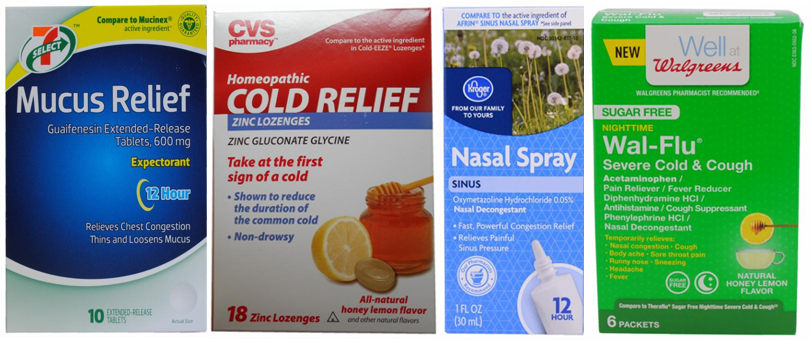Cough, Cold and Allergy Consumer and Market Update 2015: 11/6/2015
The Consumer:
According to Mintel (April 2015), more than 80% of adults who experienced a cough, cold, sore throat, or flu and about three quarters of allergy sufferers used any traditional OTC remedy in the past year.
Not surprisingly, those who suffered from a particular ailment reported using an OTC remedy that targeted the symptoms of that ailment: cold sufferers used a cold medication, cough sufferers a cough medicine. Clearly, targeted remedies are appealing. However, multi-symptom relief products have value because so many adults experience more than one ailment over the course of a year. Adult ailment sufferers, who do not use OTC medications or do not use them more often, do not think that their symptoms are severe enough to warrant them or prefer to let their ailments run their course. Concerns about side effects or drug interactions are cited less often. Adults aged 25-44 are more likely than other adults to cite concern about side effects and to say they are confused about the choices available.
Most important to a consumer’s purchase decision (rated an eight or higher) are claims about how fast the product will work and how long it will relieve symptoms. Brand is less important, likely because some consumers’ associations with the brand encompass many of these product claims. About two thirds of respondents look to a professional for an OTC recommendation and these recommendations are far more important than recommendations from nonprofessionals. Brand loyalty is low in this category and many savvy consumers look to store brands for a better value, as they see that the active ingredients are the same as national brand. Only about half of adults typically choose the same remedies time after time. About one in five specifically agree that they like to experiment and try new remedies. Adults aged 25-34 are least likely to usually choose the same remedy and most likely to experiment.
Consumers spend the majority of their Cough & Cold dollars at drug stores. However, after gaining share in 2011, drug stores have consistently lost share. Supercenters, warehouse clubs and dollar stores experienced strong increases in share of shoppers’ Cough & Cold dollars over the last 5 years, while grocery and mass merchandisers continue to experience declines. (Homescan Cross Shopping Insights 2010-2014)
The Market:
Sales of cough, cold, flu, and allergy remedies increased 16% between 2009 and 2014, reaching $7.9 billion, driven by moderately-severe flu and allergy seasons (in particular in 2012/13), and the introduction of OTC versions of formerly prescription-only brands, including Allegra and Nasacort, which helped to offset damage caused by product recalls. The category is expected to experience modest growth in the market from 2015-19, fueled by the continued benefit of the OTC conversion of Nasacort, the launch of Flonase in 2015, a severe flu season in 2014-15, and continued new product introductions.
Across the Total Cough & Cold Remedies segment, Store Brand has nearly 29% dollar share and 37% unit share. (Nielsen Total US xAOC Latest 52 Weeks Ending 08/29/15). Store Brand’s share is largest in Cold Remedies and Sinus Remedies and is smallest in Cough Drops/Lozenges. Consumers are most loyal to Store Brand within the cough, cold, and allergy segment, although Store Brand experienced the second greatest decrease in loyalty in 2013 relative to all other brands. Looking across brands, consumers tend to be more loyal to allergy remedy brands than to cold remedy brands.
What’s Next in CCA:
In the past year, the presence of Store Brand products have continued to grow.
Of all cough, cold, and allergy product launches between September 2014 and September 2015, 26.2% were Store Brands (Mintel GNPD, September 2014 – September 2015). The trends in new product launches are typically marketed under functional and/or convenience claim categories. The functional claim category continues to encompass the largest number of new decongestive, cough, cold, and flu relief products. Growth will continue with the RX to OTC switch products filling the pipeline in the next few years.
The top claims of decongestive, cough, cold, and flu relief products launched in the past year also include homeopathic and all natural, as well as free-from claims such as no additives/preservatives, low/no/reduced allergen and gluten-free. A holistic health approach to wellness is even affecting this symptom filled category.
New products for both adults and children will enter the market in the next 12-18 months with this focus. We will see both a comprehensive and preventative management approach as well as clean label products.
Learn How the Industry Experts at Daymon Worldwide Can Help You:


